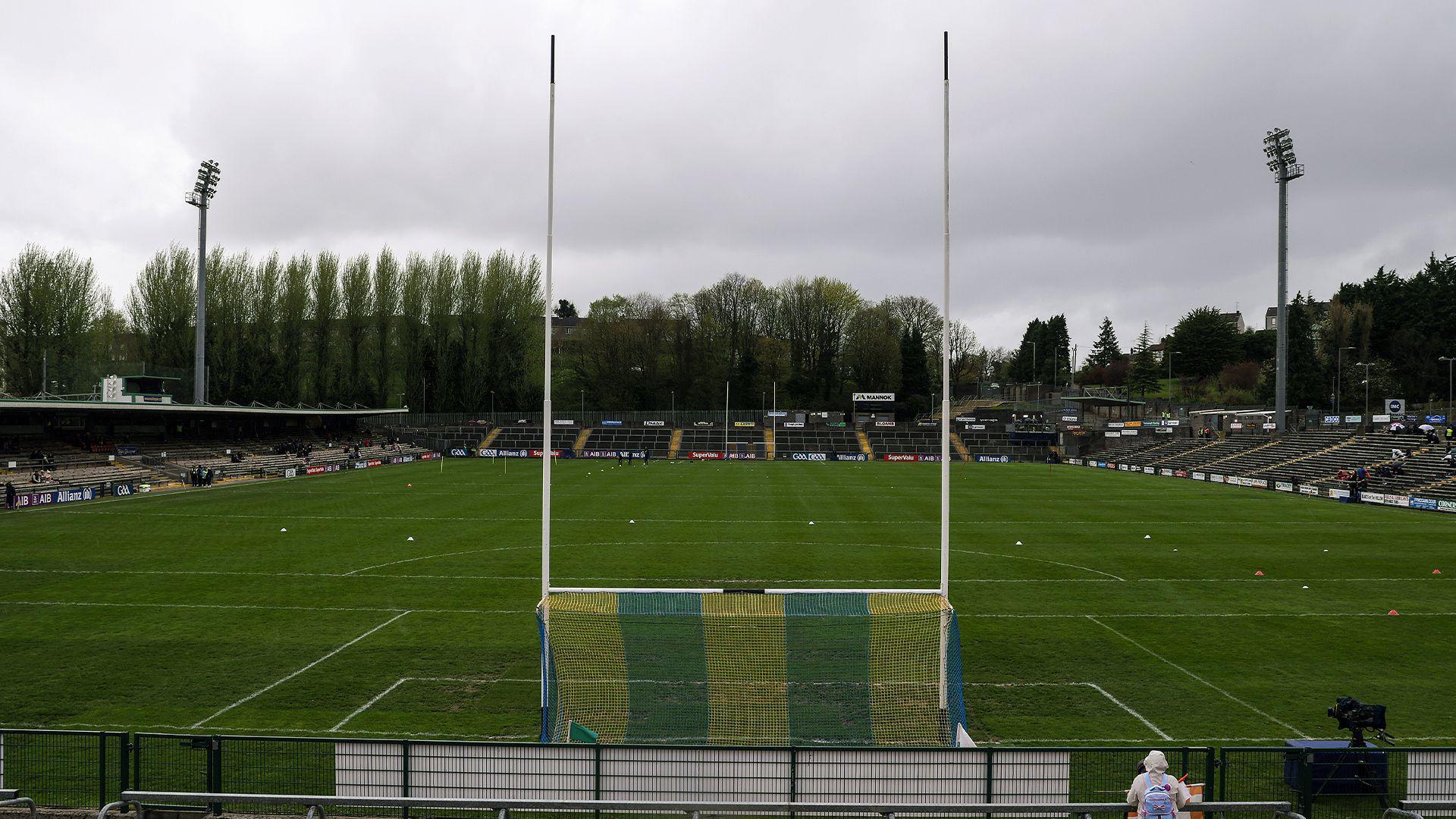Power restored to thousands in NI after Storm Ashley
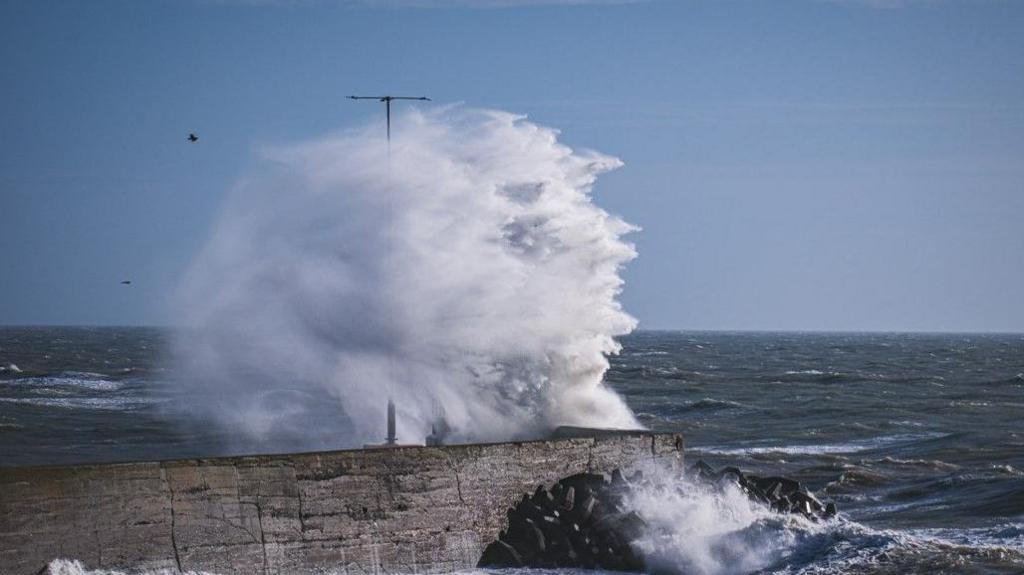
Strong winds and high tides caused dramatic scenes in Kilkeel, County Down
- Published
Thousands of homes and businesses in Northern Ireland have had their electricity restored after Storm Ashley caused outages across the network on Sunday.
Northern Ireland Electricity (NIE) restored power to more than 10,000 customers after high winds caused disruption.
In the Republic of Ireland, about 16,000 Electricity Supply Board (ESB) customers remain without power as a result of the storm.
Dozens of flights were also cancelled at Belfast City Airport and Dublin Airport, while ferry sailings and the rail network were also disrupted.
On Monday, Dublin Airport said that while winds have eased considerably, knock-on delays are "inevitable", external with a small number of flights cancelled.
A total of 81 flights were cancelled on Sunday, the airport added, with 39 go-arounds performed and 34 diverted to other airports.
Three roads flooded during the storm, the Department for Infrastructure said, with 151 obstructions reported including 139 fallen trees or branches.
All roads have since been reopened but anyone who notices an obstruction can report it here, external.
Three-hour wait
Some passengers were left on board airplanes at Belfast City Airport for a number of hours on Sunday as staff were unable to bring steps to the aircraft in the windy conditions.
Planes also had to queue to pull up to a land bridge so people could disembark.
Eamonn O'Sullivan flew from Alicante to Belfast on Sunday, but said after landing passengers were kept on the runway for hours.
He added the landing was "very difficult", and that he was surprised the plane took off in the first place.
"The winds were well forecast, it shouldn't have taken off if you were going to be left on the runway for nearly three hours," he said.
On social media, the airport said the safety of passengers and staff was of the utmost importance.

A number of passengers were stuck on the runway for hours at Belfast City Airport on Sunday
A flight from Bristol to Belfast International had to abort its landing and divert to Manchester airport.
About 60 flights due to land or depart at Dublin Airport were cancelled on Sunday, with 27 incoming aircraft performing go-arounds and 28 opting to divert to other airports.
Strong winds
The Met Office had issued an amber warning for western counties until 20:00 BST.
The weather station at Killowen, County Down, recorded a gust of 81mph (130km/h) on Sunday afternoon, the site's highest October gust since records began in 1997.
Translink also warned of delays and disruption to rail travel.
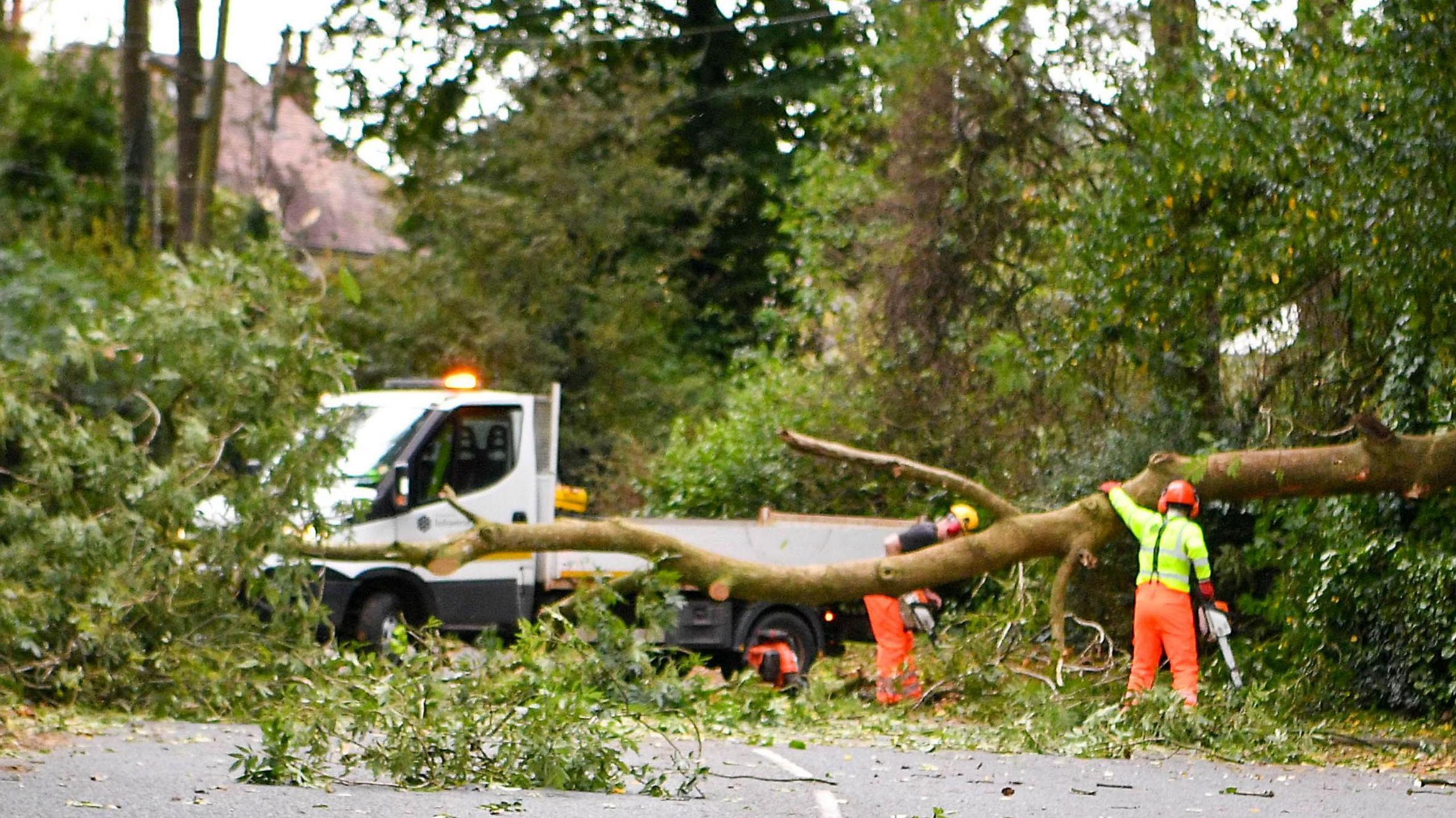
A tree came down on the Belfast Road in Newtownards
Meanwhile Stena Line and P&O ferry sailings between Northern Ireland and Scotland were heavily affected, with most sailings on Sunday cancelled.
Northern Ireland's Department for Infrastructure said temporary tidal flood defences had been deployed along the River Lagan at high-risk areas such as Lockview Road and Cutters Wharf in south Belfast.

Storm defences are being installed around Cutters Wharf in Stranmillis
There were reports of fallen trees in several areas of the north west.
These included the Foyle Road in the Prehen area of Londonderry, Drumahoe Road on the outskirts of the city, Leckpatrick Road in Artigarvan, Clagan Road in Claudy, Park Road in Strabane, and Main Street in Eglinton.
Public parks, grass pitches and recycling centres at Pennyburn, Strathfoyle, and Strahan's Road were all closed for a time on Sunday.
Newry, Mourne and Down District Council said the district’s four forest parks (Castlewellan, Delamont, Kilbroney and Slieve Gullion) were closed to the public on Sunday due to the increased likelihood and risks associated with falling branches and debris.
Fermanagh and Omagh District Council also announced closures of some outdoor council facilities, including Gortin Glens Forest Park.
And in Armagh City, Banbridge and Craigavon council announced there may be a delay in opening household recycling centres on Monday.
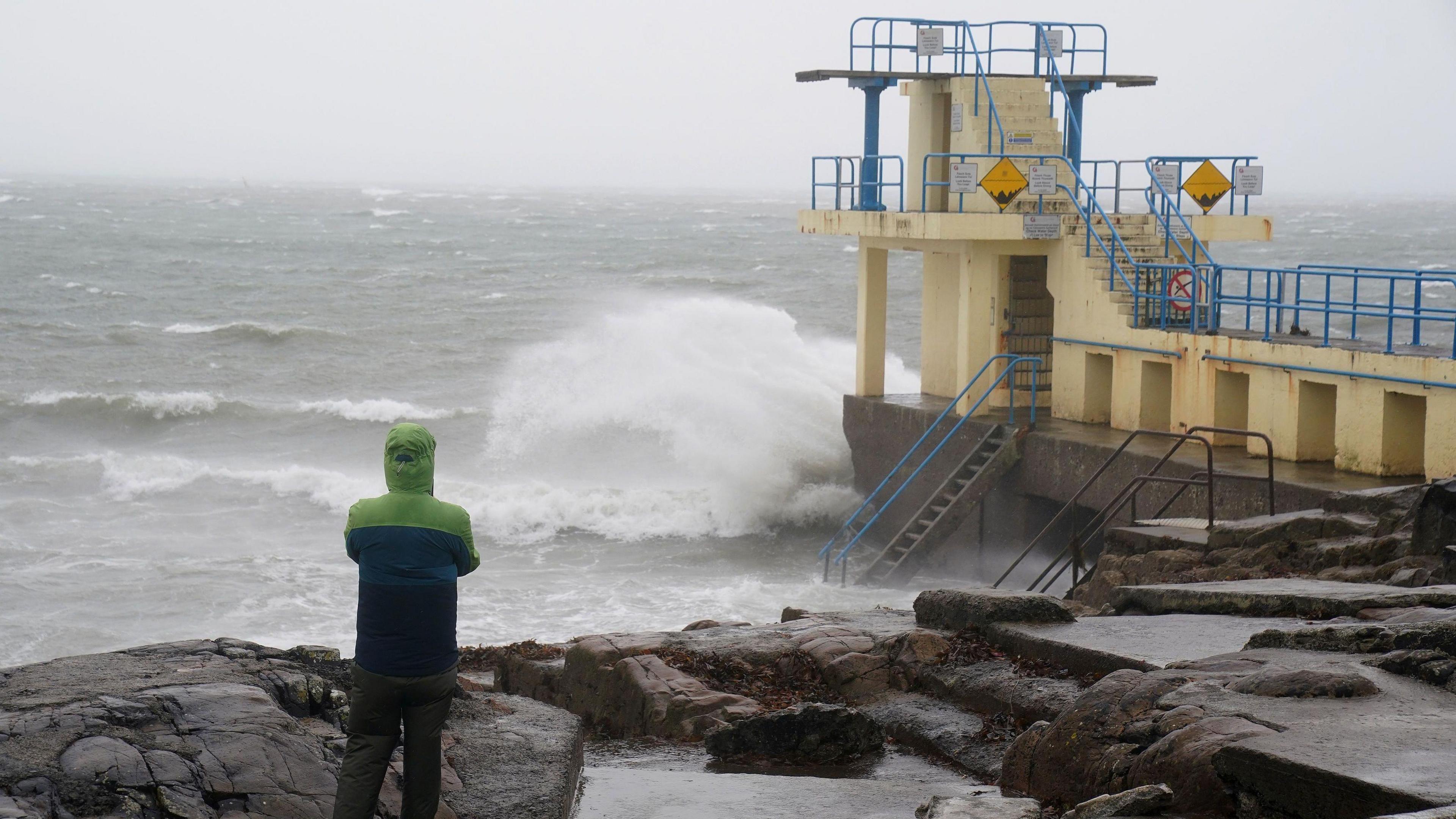
Orange alerts were issued for many counties in the west of Ireland, including Salthill in Galway
Met Éireann, who issue warnings across the Republic of Ireland, issued their second-highest level of warning - Status Orange - for many western counties including Galway and Mayo.
The highest gust recorded across the island of Ireland was 85mph at Mace Head in Galway.
A yellow warning was also issued for the rest of the country from midnight on Saturday and expired at 03:00 on Monday.
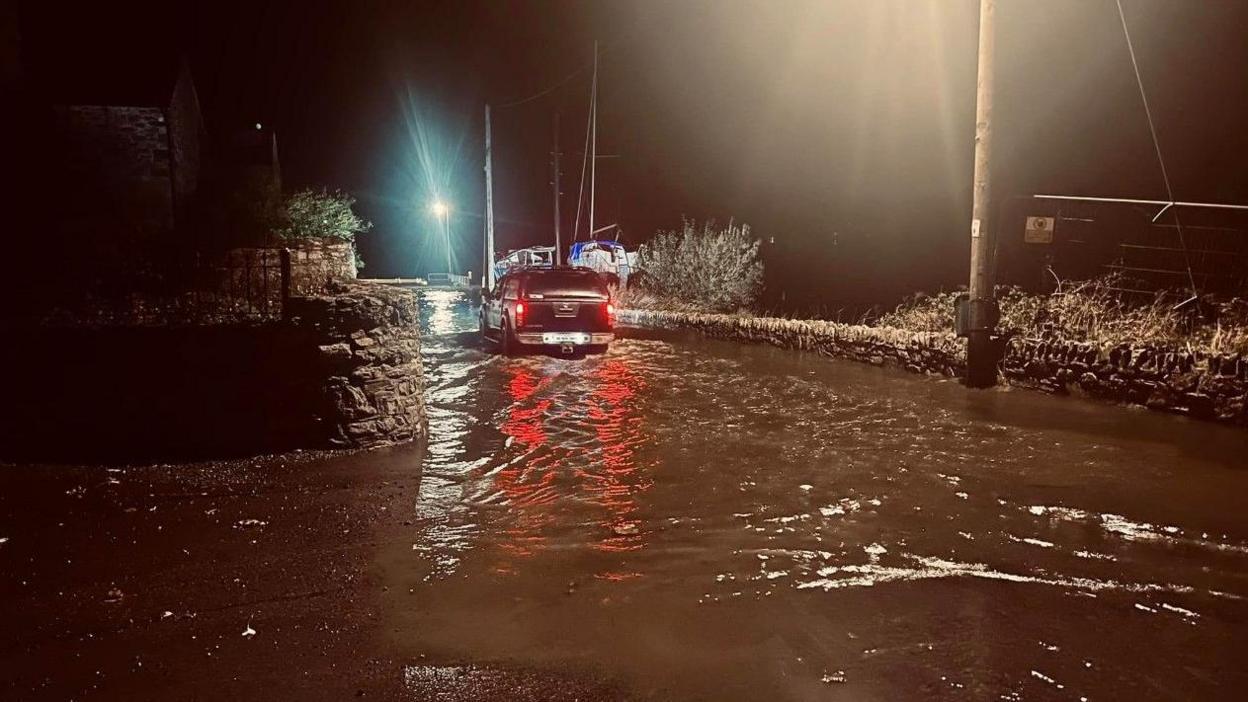
Some areas in Ramelton, County Donegal, experienced flooding
At one stage on Sunday more than 50,000 homes and businesses in the Republic of Ireland were without electricity.
In County Donegal, a number of fallen trees were reported in locations such as Ardara, Milford, Rathmullan, Castlefinn, Raphoe, Lifford, Malin Head and Greencastle. Some flooding was also reported in Ramelton following heavy rain.
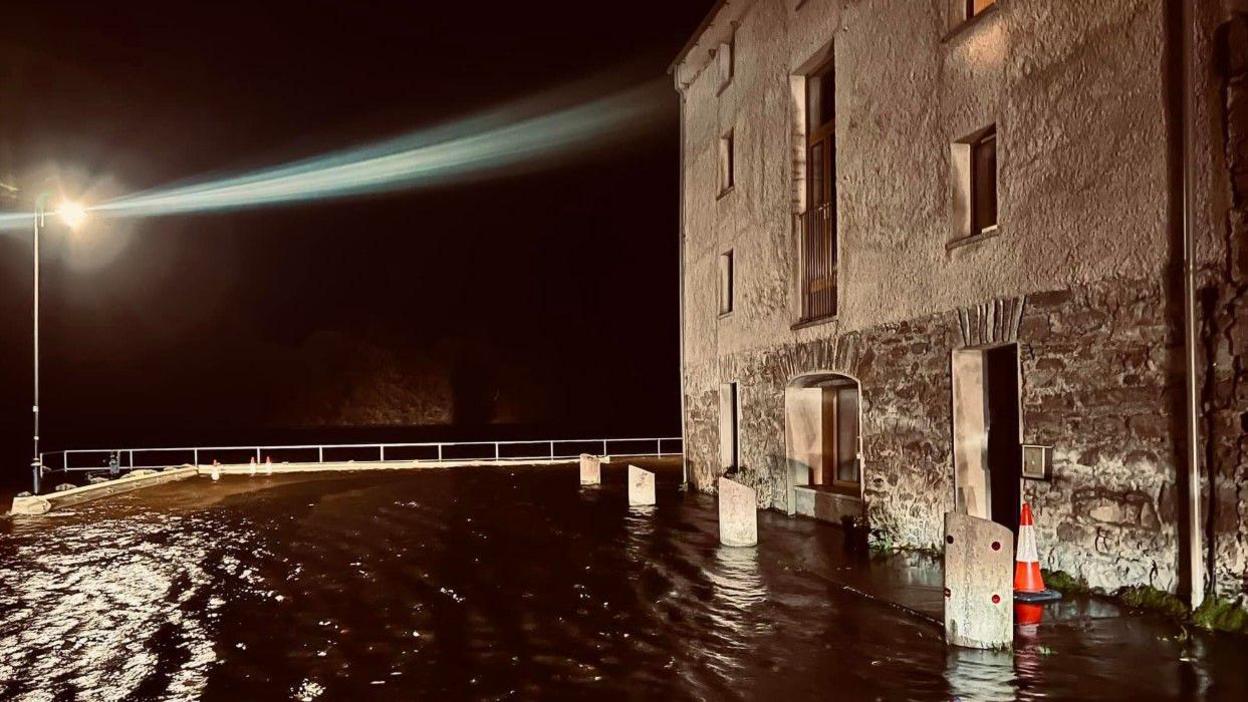
The old warehouses at the Quayside in Ramelton, County Donegal, experienced high water levels where the River Lennon meets the tidal water of Lough Swilly
Why are storms named?
The latest storm name season started on 1 September and will be used until 31 August 2025.
Ashley is the first name on the alphabetical list so the next storm would be named Bert, followed by Conall.
Storms can be named by the Met Office, Met Éireann or the Netherlands meteorological service (KNMI) if any believe impacts from severe weather are "medium" or "high".
It is thought that naming storms gives the public a greater awareness of the potential impacts of severe weather.
Related topics
- Attribution
- Published20 October 2024
